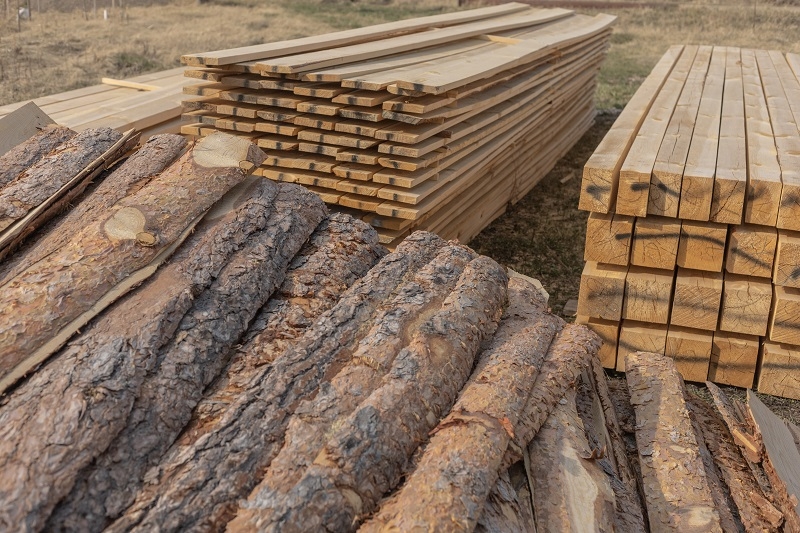Published: 16/08/23 By: Mike Bekin
As timber experts, we can acknowledge that the industry comes with its fair share of jargon. When you have years of experience working with wood, that is not much of a problem. But if you are taking on a new timber-based project for the first time, you might be feeling a bit overwhelmed by all the industry-specific terms – and you are not alone! That is why we put together guides to help you get to grips with everything you need to know.
In this guide, we will be focusing on rough-sawn timber. What is it, for what is it used, and could it be the right wood for your project?
What is Rough-Sawn Timber?
Rough-sawn timber, also known as rough-cut timber, refers to wood which has been cut using a sawmill but has not undergone any planing or finishing processes. In other words, it is rustic as it’s the first cut process that the log undergoes – so here’s where the bark goes and the round log is sawn into planks and beams! This type of timber is characterised by its natural, rugged surface texture which embraces visible saw marks and irregularities rather than smoothing the wood to perfection. If you are looking for a more ‘straight from the forest’ sort of look, this is the timber for you.
Rough-Sawn Timber Applications
Rough-sawn timber is typically used in construction and woodworking projects where a more rustic or natural appearance is desired, or where the construction tolerances are not too important – think of oak garden sleepers. Let’s take a quick look at some of the most common applications:
Structural Applications:
Rough-sawn timber is commonly used for structural elements in building construction, such as beams, posts and joists. When these are hidden within the walls of a structure, carrying out finishing processes is often not necessary, and for exposed elements, rough-sawn timber adds plenty of character and visual interest.
Exterior Cladding:
Exterior cladding for buildings is an ideal application for rough-sawn wood, such as Oak or Chestnut. It provides a rustic, traditional aesthetic which is perfect for cabins, barns and other structures where a rough natural look is desired.
Fencing:
When building fences, many people opt for rough-sawn timber which suits the outdoor space. An option which embraces the imperfections of timber, it creates a seamless flow between man-made constructions and the natural world – and it’s much cheaper.
Fenders and Marine Applications:
Marine applications, such as fenders, often do not need to be perfect to be suitable for use. That is why rough-sawn timber is a common choice. The weathered, rustic look also blends well with marine environments and creates a gorgeous aesthetic which will last for years to come.
How to Use Rough-Sawn Timber
When working with rough-sawn timber, it is essential to consider its moisture content. You want to prevent too much movement after installation, so your design needs to incorporate the fact that the wood might shrink until it reaches its moisture equilibrium with the environment.
Surface preparation is sometimes needed also, particularly for exposed elements. Because it is rough-sawn, the timber may have splinters, sharp edges and rough spots, all of which can be sanded away without ruining the textured, rustic aesthetic.
Proper treatment and finishing, such as staining, painting or sealing, should be considered to protect the timber from moisture, insects or UV exposure, depending on the specific use and location of the timber.
Find Rough-Sawn Timber at EcoChoice
From cladding to decking and everything in between, our team at EcoChoice will be happy to help you find the right rough-sawn timber for your project. Simply get in touch with us today and let’s get the ball rolling!
Image: Arisani / Shutterstock.com
